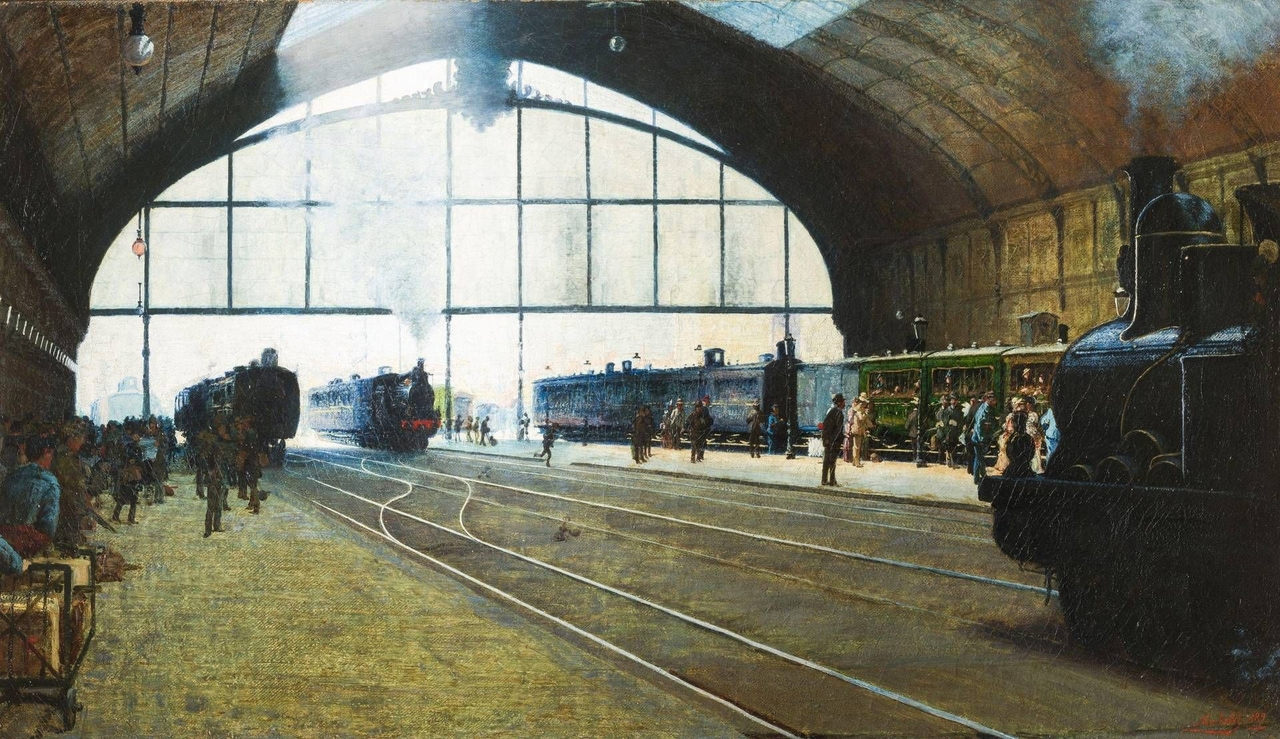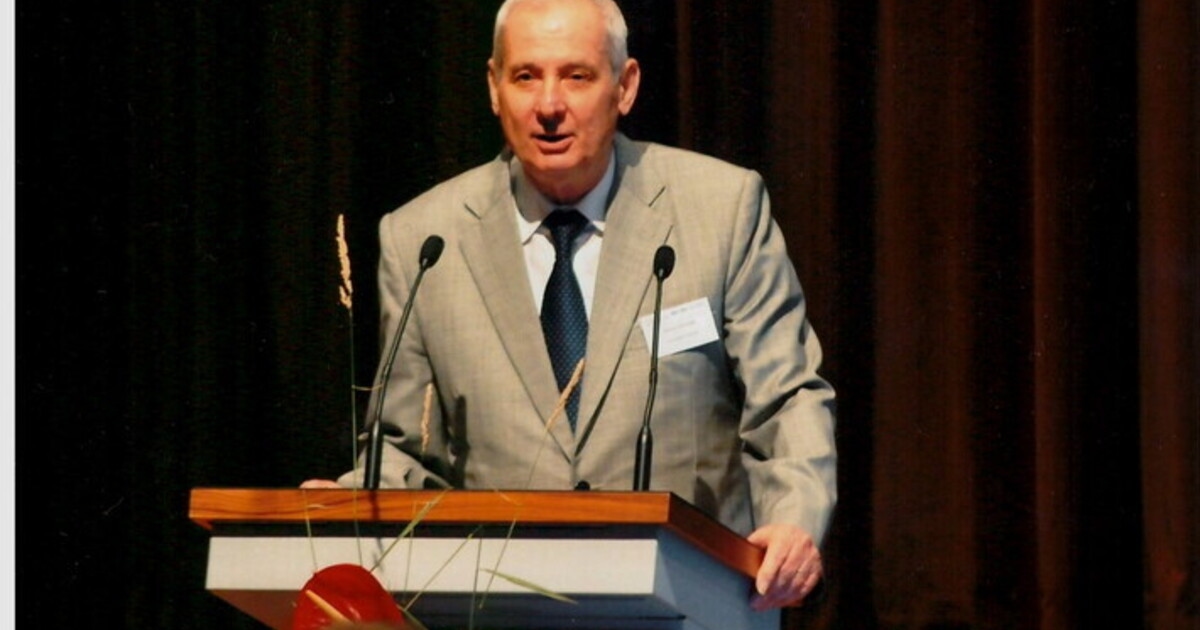A 120-year journey: an exhibition celebrating the history of the FS Italiane Group in Rome.

A journey spanning more than a century, from railway tracks to social transformations, technological innovations, and the country's great challenges: this is the story at the heart of the exhibition "Italian Railways (1861-2025). From National Unity to the Challenges of the Future," promoted and organized by Vive – Vittoriano and Palazzo Venezia and the FS Italiane Group, in the Sala Zanardelli of the Vittoriano and the Giardino Grande of Palazzo Venezia. The exhibition, open from tomorrow, Friday, November 7, to January 11, was presented today by its curator, Edith Gabrielli, general director of Vive, and Tommaso Tanzilli, president of the FS Italiane Group.
"But more than any other administrative reform, the construction of the railways will contribute to consolidating the achievement of national independence": with these words, Camillo Benso, Count of Cavour, already in the 1840s identified the role of the railways in the Risorgimento and in the construction of modern Italy, a young, united, and free nation. The history of national unity and the history of the railways are almost inseparable: the tracks have given concrete form to Italy's political geography, connecting territories divided for centuries, fostering economic and cultural exchanges, bridging distances, and creating opportunities for employment and social mobility. Trains and stations have also helped shape a new collective identity, made up of travel, encounters, commuting, emigration, and return. In this now centuries-long process, the railways have been a source of inspiration for writers and artists, becoming a powerful metaphor for modernity, speed, and progress, and sometimes even for their undeniable contradictions.
The Vittoriano, conceived in 1878, following the death of Victor Emmanuel II, the first king of Italy, and the symbolic heart of the nation, is the ideal place to embrace Cavour's vision and translate it into an exhibition. Managed by Vive - Vittoriano and Palazzo Venezia, an independent institute of the Ministry of Culture, the Vittoriano is a place of art, memory, and a living space for reflection on the Risorgimento and the nation's founding values: freedom of the homeland and unity of citizens, now within a democratic and European context. The initiative is part of the celebrations for the 120th anniversary of the founding of the Italian State Railways in 1905. Since then, the FS has accompanied every crucial phase of Italian history, from post-war reconstruction to the economic boom, up to high-speed rail and today's digital transition.
The FS Group is an industrial enterprise that currently employs over 96,000 people and operates in the sectors of rail, road, logistics, infrastructure, urban regeneration, and technology services. It is undergoing a profound transformation with a planned investment of over €100 billion over five years, aimed at strengthening the resilience of rail and road infrastructure, improving service quality, completing strategic projects, and promoting increasingly sustainable and intermodal mobility.
The history of the Italian railways is divided into four chronological sections, an immersive section, and an educational-demonstrative section. The first section, from 1861 to 1904, recounts the arduous transformation of the first regional networks into a truly national system. The second section, from 1905 to 1944, explores the era of state management, with the founding of the Italian State Railways (FS), technical innovations, the political and military use of the railways, up until the Fascist regime and the Second World War. The third section, from 1945 to 1984, focuses on post-war reconstruction, the economic boom, and the role of trains in large-scale internal migration and daily commuting. The fourth section, from 1985 to the present, focuses on high-speed rail, digitalization, and the challenges of sustainability, offering a glimpse into the future. The immersive section, also located in the Zanardelli Hall, uses cutting-edge digital technology to allow visitors to experience the story in emotional and multisensory ways. The educational-demonstrative section is located in the large garden of Palazzo Venezia: two monumental scale reproductions allow us to appreciate the aesthetic qualities of the Settebello and the Arlecchino, icons of post-war Italian design.
The exhibition, which begins with a rigorous historical framework, approaches the theme with a markedly interdisciplinary approach. Each section features four main strands of interpretation, each expressed through four information panels. These strands highlight the impact of railways and, at the same time, their transformative power. Beyond a means of transportation, the train was and is a device capable of shifting the perception of time, redefining the concept of distance, and inspiring new visions of work, identity, and community. The first strand focuses on the history of railways in Italy, the development of the network and its vehicles, technical and engineering expertise, and organizational and management decisions. The focus ranges from the first national network to the introduction of high-speed rail, up to the current construction sites funded by the National Recovery and Resilience Plan (NRRP). The second strand addresses identity, institutions, politics, and economics, exploring the motivations, strategies, and effects of railway-related decisions in these areas. Infrastructure emerges as a tool for unification, modernization, and territorial governance, as well as a decisive factor in productive development and a measure of the country's contradictions, beginning with the divide between countryside and city, and between North and South.
The third strand of the exhibition explores the theme in its social and anthropological context, exploring the impact of railways on daily life, work, and customs, the emergence of new professions, and the transformation of collective rhythms and perceptions: from the emergence of a new figure, that of the railway worker, to the recent shift in the concept of distance and the advent of long-distance commuting with the introduction of high-speed trains. The fourth and final strand of the exhibition explores the interpretation of railways in the arts, painting, photography, film, poetry, and literature. Artists, earlier and better than others, have grasped the phenomenon's complexity, capturing both its innovative power and its shadows, alienations, and contradictions. In their works, the train becomes a symbol of modernity and a mirror of its ambivalences, an image of progress and loss, of speed and distance, at times a place of creative experimentation or even an existential metaphor.
"The history of Ferrovie dello Stato Italiane is the history of a country that has never stopped moving," said Stefano Antonio Donnarumma, CEO and General Manager of the FS Group, adding that "over 120 years, we have accompanied Italy's growth, uniting regions, people, and communities, and helping to build an increasingly modern and sustainable mobility model. With the new 2025–2029 Strategic Plan, we have embarked on a journey of profound transformation: €100 billion in investments to design the infrastructure of the future, make the network more resilient and digital, strengthen intermodality, and accelerate the energy transition. We are an industrial group that evolves alongside the country, bringing Italian excellence and expertise to the world to build increasingly integrated, accessible, and sustainable mobility. The exhibition at the Vittoriano chronicles this evolution, but above all, it demonstrates the commitment of a Group that looks to the future, continuing to be a driver of progress, innovation, and cohesion for the entire country."
The exhibition is accompanied by a catalog published by Silvana Editoriale, featuring in-depth analysis and comprehensive illustrations of all the works on display, and texts by Edith Gabrielli (VIVE director and exhibition curator) and the Scientific Committee, composed of Professors Francesco Benigno (Scuola Normale Superiore, Pisa), Lorenzo Canova (University of Molise), Andrea Giuntini (formerly of the University of Modena and Reggio), and Stefano Maggi (University of Siena). Throughout the exhibition, the Vive educational team is offering a rich program of activities for children, families, those with special needs, and schools of all levels.
Adnkronos International (AKI)




